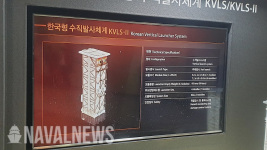
1st Multi-Domain Task Force deploys the Army’s first Long-Range Hypersonic Weapon system
JOINT BASE LEWIS-MCCHORD, Wash. — In her keynote address at the 2021 annual meeting and exposition of the Association of the United States Army, Secreta...

By Jason Sherman / March 22, 2023 at 1:24 PM
The head of U.S. Northern Command and North American Aerospace and Defense Command has identified a $211.5 million project not funded in the Pentagon's fiscal year 2024 budget request that would buy nine Three-Dimensional Expeditionary Long Range Radars to monitor domestic airspace if Congress were to provide additional funding. Gen. Glen VanHerck, the dual-hatted commander of U.S. NORTHCOM and bi-national NORAD, has identified the 3DELRR acquisition as a main project in a larger $376 million collection of FY-24 unfunded priorities...
FWIW re TPY-4 radar, AESA software defined GaN L-band, stare range 1000 km /540 nm, transportable via c-130.
Northern Command FY2024 unfunded priority for nine, presuming not to use with Patriot missiles?
NORAD chief seeks 3DELRR radars to fill homeland defense 'surveillance gaps' in FY-24 wish list | InsideDefense.com
JASSM-ER is completely replacing the standard JASSM, it is the exact same size. JASSM-XR is to replace the conventionally-armed AGM-86s, with LRSO replacing the nuclear AGM-86s and AGM-129s. JASSM-XR is rated at 1,900+km with a 2,000lb warhead.AGM-158 is going to become the standard stand-off missile of USAF for non-nuclear roles. It has following variants:
JASSM: 230 mi (370 km)
JASSM-ER: > 575 mi (925 km)
JASSM-XR: > 1,200 mi (1,900 km)

 www.thedefensepost.com
www.thedefensepost.com



It'll probably be Mk57 based, that can quad-pack RIM-66s (SM-2s) or RIM-162 (ESSMs).The news about the development of a new VLS is very exciting to me. According to LM, 4 cells will there in a module instead of 8 of Mk-41. They are even saying, it will be able to quad-pack even Standard series missile.
I'm guessing it will be similar to KVLS-II or MK-57 but much bigger in the dimensions.
Maybe it will be completely new after all.The news about the development of a new VLS is very exciting to me. According to LM, 4 cells will there in a module instead of 8 of Mk-41. They are even saying, it will be able to quad-pack even Standard series missile.
I'm guessing it will be similar to KVLS-II or MK-57 but much bigger in the dimensions.

“But as part of being able to do a larger diameter missile, you could say take an eight-cell Mk.41 out, put what would be a four-cell with an exhaust on it. But those four cells would be able to handle quad packs of traditional missile canister-sized, or potentially larger missiles that will be coming in the future. So that’s part of one of the things we’re investing in that will help us maximize what you can do from your loadout perspectives and potentially even increase. Because if you think about it, with a four-cell quad pack that’s sixteen and more than the eight that were originally there, just because we changed the structure.”
Yeah, completely new. I was just guessing the shape. It might be similar looking to the KVLS-II. But, quad packing SM-6 is just mind boggling.Maybe it will be completely new after all.

Lockheed Martin Developing New, Larger VLS for DDG(X) - Naval News
Lockheed Martin revealed to Naval News that the company is developing a brand new Vertical Launching System known as G-VLS for DDG(X).www.navalnews.com
Probably so it can fit the LRHW. These are the dimension of the KVLS-II:Yeah, completely new. I was just guessing the shape. It might be similar looking to the KVLS-II. But, quad packing SM-6 is just mind boggling.

The diameter of LRHW is ~0.88m and the diameter of SM-6 is ~0.53m. I don't know how they are gonna quad-pack SM-6 missile even if the dimension are close to 1.1m for the new upcoming VLS.Probably so it can fit the LRHW. These are the dimension of the KVLS-II:
A pack of 4 is 3.0x2.4x9.8m, so each 1 is likely 1.0-1.1m square x9.8m deep internally.
View attachment 27399
